Roulette |
|||||||||||||||||||||||||||||||||||||||||||||||||||||||||||||
 |
 |
||||||||||||||||||||||||||||||||||||||||||||||||||||||||||||
Crocheted sweater with lace pattern, worked from the middle outwards. Sizes S - XXXL. The piece is worked in DROPS Paris.
DROPS 186-25 |
|||||||||||||||||||||||||||||||||||||||||||||||||||||||||||||
|
INFORMATION FOR THE PATTERN: PATTERN: See diagrams A.1 to A.5. Choose diagram for your size (applies to A.5a and A.5c). ---------------------------------------------------------- SWEATER: The piece is worked in the round from middle of front/back piece and outwards. You first work a circle, then continue so that it becomes a square making the front/back piece. Then the shoulders are worked and finally you work back and forth along bottom of body. The sleeves are worked in the round, top down. BACK PIECE: Start with crochet hook SIZE 5.5 mm/US I/9 and Paris and work pattern according to diagram A.1b a total of 10 times on the round (A.1a shows how the rounds start and finish). REMEMBER THE CROCHET GAUGE! When A.1a and A.1b are finished, the circle measures approx. 40 cm / 15¾" in diameter. Continue working to make a square as follows: Start on the round with an arrow and work A.2b a total of 4 times in the round (A.2a shows how the rounds start and finish). When A.2a and A.2b are finished the piece measures approx. 47 x 47 cm / 18½" x 18½". Cut the strand. Fasten the strand with 1 single crochet around the chain-space marked with a black star - see last round in A.2b, and work from the round marked with an arrow as follows: Work A.3a (shows how the rounds start and finish), work A.3b in the same chain-space and the next chain-space (= corner), * work A.3c to the next corner (= 10 repeats), work A.3b around the next 2 chain-spaces (= corner) *, work from *-* 2 more times, work A.3c to the start of the round. Work the last round in the diagrams. Sizes S + M + L + XL are now finished. For sizes XXL + XXXL continue by repeating the last 2 rounds 1 more time in height All sizes: There are now 2-2-2-2-4-4 rounds of A.3a - A.3c around the square and 13-13-13-13-15-15 fans (= 2 double crochets + 3 chain stitches + 2 double crochets) along each side of the square. The piece measures approx. 55-55-55-55-63-63 x 55-55-55-55-63-63 cm / 21½"-21½"-21½"-21½"-24¾"-24¾" x 21½"-21½"-21½"-21½"-24¾"-24¾". Cut the strand. Sizes S + M are finished. For sizes L + XL + XXL + XXXL continue working outwards on each side of the back piece. Fasten the strand with 1 single crochet around the middle chain-space in one of the corners and work from the row with an arrow from the right side as follows: Work A.4a, A.4b until there is 1 double crochet group left (= 2 double crochets + 3 chain stitches + 2 double crochets) before the next corner, A.4c. Repeat the last 2 rows of A.4a - A.4c until you have worked a total of 1-2-2-3 rows in height. All sizes: You have now worked 0-0-1-2-2-3 rows of A.4a - A.4c outwards on the one side. Work in the same way on the opposite side of the square. RIGHT SHOULDER: Work for the different sizes as follows: Sizes S + M: Fasten the strand with 1 single crochet around the chain-space in the corner – see black square on sketch. Work pattern from the row with an arrow in the diagrams back and forth from the right side as follows: ROW 1: Work A.4a, A.4b 2-2 times, A.5b (= towards neck). ROW 2: Turn and work the last row in the diagrams back in the same way ROW 3: Turn and work as for row 1. Cut the strand. Sizes L + XL, XXL + XXXL: Fasten the strand with 1 single crochet outermost in the corner – see black square in the sketch. Work pattern from the row with an arrow in the diagrams, back and forth from the right side as follows: ROW 1: Work A.5a (choose diagram for your size), A.4b 2-2-2-2 times, A.5b (= towards neck). ROW 2: Turn and work the last row in the diagrams back in the same way. ROW 3: Turn and work as for row 1. Cut the strand. LEFT SHOULDER: Work in the same way as for right shoulder, but start from the wrong side and in the corner marked with a black dot – see sketch. NOTE: Do not work over the middle 5 repeats of double crochet groups (= 2 double crochets + 3 chain stitches + 2 double crochets) in the middle of this side = neck. BOTTOM OF BACKPIECE: Insert a marker thread at the bottom of the backpiece and work for the different sizes as follows: Sizes S + M: Fasten the strand with 1 single crochet around the chain-space in the corner at the bottom of the backpiece. Work pattern from the row with an arrow in the diagrams back and forth from the right side as follows: ROW 1: Work A.4a, A.4b 11 times, A.4c. ROW 2: Turn and work the last row in the diagrams back in the same way. Repeat rows 1 and 2 until the piece measures approx. 4-6 cm / 1½"-2¼" from the marker thread at bottom of backpiece. The piece measures approx. 65-67 cm / 25½"-26½" from the shoulder down. Cut and fasten the strand. Sizes L + XL, XXL + XXXL: Fasten the strand with 1 single crochet outermost in the corner at the bottom of the backpiece. Work pattern from the row with an arrow in the diagrams back and forth from the right side as follows: ROW 1: Work A.5a (choose diagram for your size), A.4b 11 times, A.5c (choose diagram for your size). ROW 2: Turn and work the last row in the diagrams back in the same way. Repeat rows 1 and 2 until the piece measures approx. 8-10-4-6 cm / 3"-4"-1½"-2¼" from the marker thread at the bottom of the backpiece. The piece measures approx. 69-71-73-75 cm / 27"-28"-28¾"-29½" from the shoulder down. Cut and fasten the strand. FRONT PIECE: Work in the same way as for the back piece. ASSEMBLY: Sew the shoulders together working in each and every stitch along the seam. Insert a marker thread 16-16-18-20-20-22 cm / 6¼"-6¼"-7-"8"-8"-8¾" from the shoulder down the side (marks the armhole). Sew the side seam from the bottom and up as far as the marker thread in the armhole. Repeat in the other side. SLEEVE: The sleeve is worked in the round from the armhole. Fasten the strand with 1 single crochet by the marker thread in one of the armholes mid under the sleeve and work as follows: ROUND 1: Work * 3 chain stitches, skip approx. 2 cm / ¾", 1 single crochet *, work from *-* a total of 15-15-17-19-19-21 times, work 3 chain stitches and finish with 1 slip stitch in the first single crochet on the round = 16-16-18-20-20-22 chain-spaces. ROUND 2: Work from the round with an arrow: A.3a (shows how the rounds start and finish), A.3c a total of 8-8-9-10-10-11 times on the round. Repeat the last round in the diagrams until the sleeve measures approx. 33-34-33-32-29-28 cm / 13"-13½"-13"-12½"-11½"-11". Cut and fasten the strand. Work the other sleeve in the same way. NECK: Fasten the strand with 1 single crochet on one of the shoulders and work as follows: ROUND 1: Work * 3 chain stitches, skip 1-1½ cm / ⅜"-½", 1 single crochet *, work from *-* around the whole neck, but in each corner in the transition between shoulder and neck work 1 double crochet instead of 1 single crochet. ROUND 2: Work 1 chain stitch (does not replace the first single crochet), * 2 single crochets around the first/next chain-space, 1 chain stitch *, work from *-* around the whole neck, finish with 1 slip stitch in the first chain stitch at the beginning of the round, then work slip stitches as far as the first chain stitch. ROUND 3: Work 1 chain stitch (does not replace the first single crochet), * 1 single crochet around the first/next chain stitch, 3 chain stitches *, work from *-* to end of round, finish with 1 slip stitch in the first chain stitch. Cut and fasten the strand. |
|||||||||||||||||||||||||||||||||||||||||||||||||||||||||||||
Diagram explanations |
|||||||||||||||||||||||||||||||||||||||||||||||||||||||||||||
|
|||||||||||||||||||||||||||||||||||||||||||||||||||||||||||||
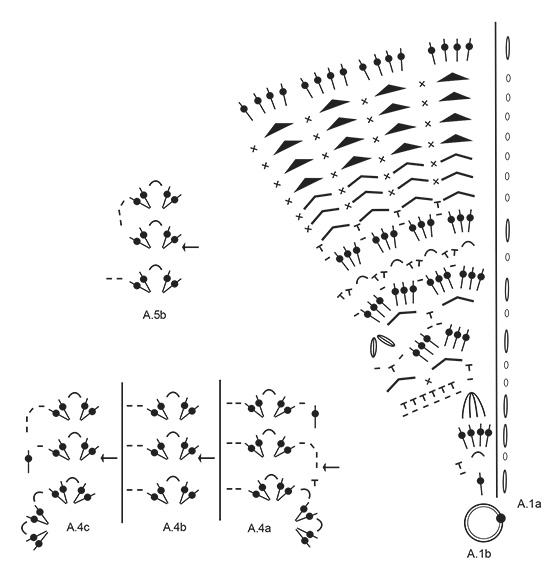
|
|||||||||||||||||||||||||||||||||||||||||||||||||||||||||||||
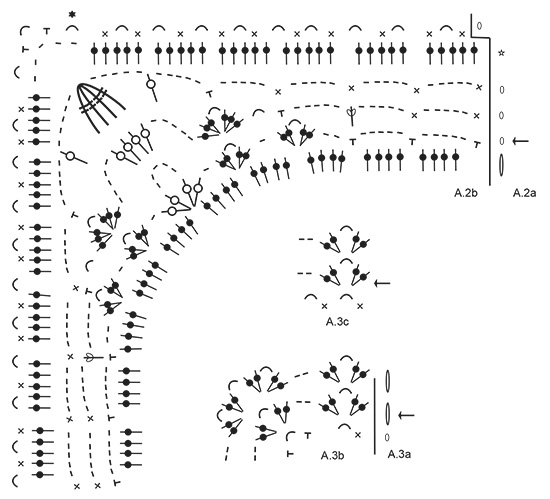
|
|||||||||||||||||||||||||||||||||||||||||||||||||||||||||||||
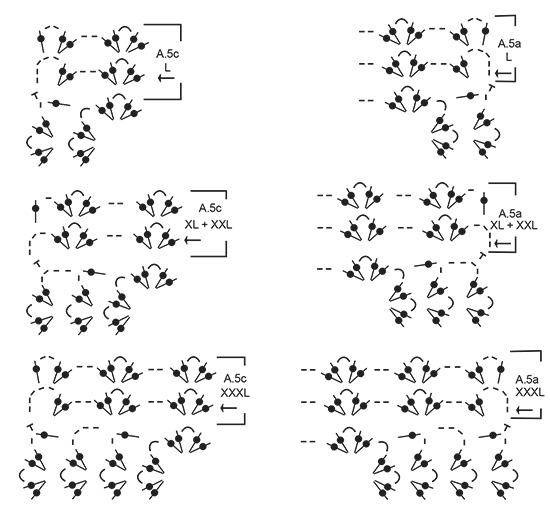
|
|||||||||||||||||||||||||||||||||||||||||||||||||||||||||||||

|
|||||||||||||||||||||||||||||||||||||||||||||||||||||||||||||
|
Have you made this or any other of our designs? Tag your pictures in social media with #dropsdesign so we can see them! Do you need help with this pattern?You'll find tutorial videos, a Comments/Questions area and more by visiting the pattern on garnstudio.com. © 1982-2024 DROPS Design A/S. We reserve all rights. This document, including all its sub-sections, has copyrights. Read more about what you can do with our patterns at the bottom of each pattern on our site. |
|||||||||||||||||||||||||||||||||||||||||||||||||||||||||||||







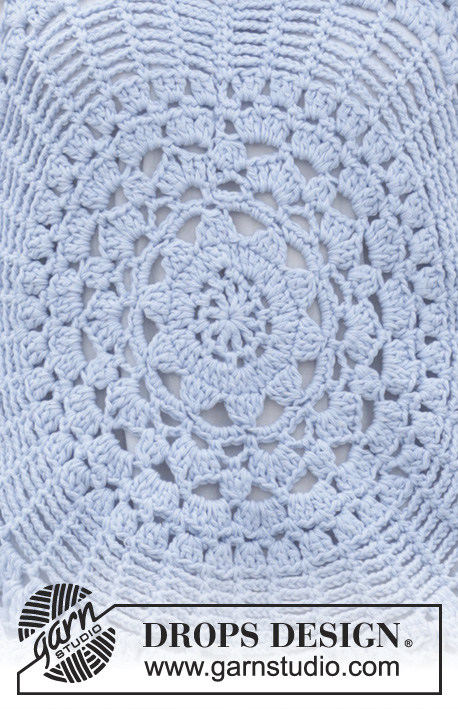

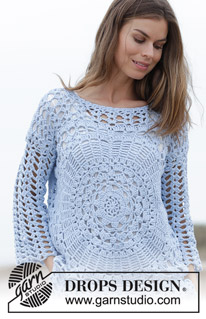
















































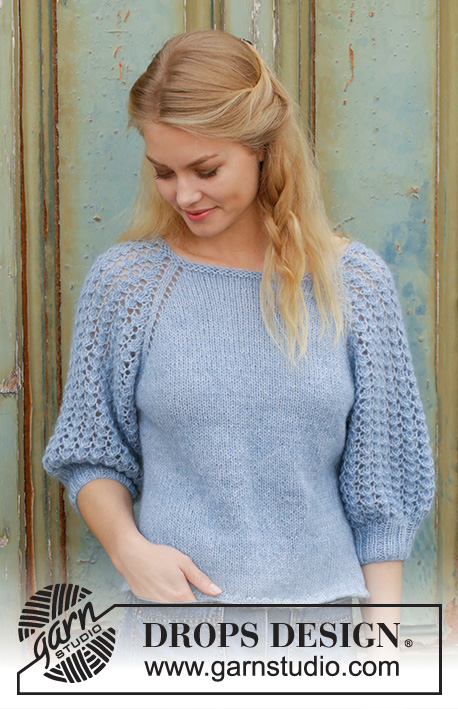

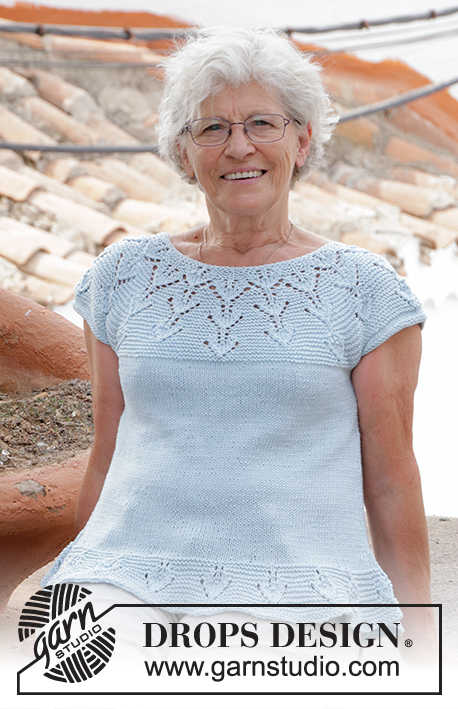






Comments / Questions (24)
Hej Er denne Hæklet i dobbelt tråd?
12.06.2023 - 16:27DROPS Design answered:
Hej Ninette, den er hæklet i 1 tråd DROPS Paris på hæklenål 5,5, du skal få 13 stangmasker på 10 cm i din hækleprøve :)
13.06.2023 - 13:51Do you perhaps have a written version of this patten as I am having difficulty in following the charts
29.12.2022 - 12:55DROPS Design answered:
Hello Estelle Rademeyer! Charts are much easier to follow than written patterns and have fewer mistakes. Please look at the videos and step-by-step tutorials at the end of the pattern. Happy crocheting!
30.12.2022 - 12:17Hoeveel stokjes worden er in de eerste toer van de lossen ring gehaakt? Ik kom er niet uit.
16.03.2021 - 21:23DROPS Design answered:
Dag Anneke,
Je haakt eerst 4 lossen en deze sluit je tot een ring. In deze ring haak je A.1b in totaal 10 keer, dus je haakt 10 stokje in de ring. In plaats van het eerste stokje haak je 3 lossen (dus deze 3 lossen vervangen het eerste stokje).
21.03.2021 - 11:38Buongiorno Quante maglie alte nel primo giro,
20.02.2021 - 15:28DROPS Design answered:
Buonasera Anna, deve iniziare a lavorare dal diagramma A.1b. Buon lavoro!
20.02.2021 - 19:11Bonjour, je suis sur le diagramme A.3a, A.3b et A.3C. Il est écrit "*répéter A.3c jusqu'au coin suivant (= 10 fois). On commence sur l'arceau près du coin "2 brides/3ml/2 brides" - 2ml - puis le coin (A.2b) - 2ml et à nouveau "2 brides/3ml/2 brides". Si vous comptez 10 fois à partir du coin, cela fait 11 fois. Pouvez-vous m'expliquer, je suis un peu perdue.Dans l'attente de votre réponse. Merci à vous.
02.07.2019 - 20:48DROPS Design answered:
Bonjour Ghislaine, dans le dernier arceau avant le coin, on crochète comme A.3c, puis le coin, et on répète A.3c 10 fois jusqu'à ce qu'il reste 1 arceau avant le coin suivant, on crochète A.3b : dans le dernier arceau avant le coin + dans le coin. Bon crochet!
03.07.2019 - 07:22JE NE COMPRENDS PAS BIEN L\'ENCHAINEMENT DES DIAGRAMMES\r\nhelp!\r\nmerci
03.05.2019 - 21:42DROPS Design answered:
Bonjour Mme Larruy, vous trouverez ici quelques informations complémentaires sur les diagrammes. Bon crochet!
06.05.2019 - 15:29Ich verstehe leider nicht, wie man die Schulterpartie arbeiten soll. Könnt Ihr das bitte detaillierter erläutern? Danke
28.04.2019 - 23:13DROPS Design answered:
Liebe Frau Rocks, rechte Schulter (Rückenteil) beginnen Sie in der Ecke mit dem schwarzen Vierecke in der Maßskizze) und häkeln Sie von hier: Größe S+M(= von Schulter) die Reihe mit dem Pfeil im Diagram: A.4a, A.4b x 2, A.5.b (Hals) - Größe L bis XXXL: A.5a, A.4b x 2, A.5b. Wenden Sie und dann häkeln Sie die nächste Reihe genauso links nach rechts. Wenden Sie, und dann noch mal die 1. Reihe wierderholen. Viel Spaß beim häkeln!
29.04.2019 - 10:56Good morning, I would like to know if your patterns come in written versions? Following graphs doesn't work for me.
26.04.2019 - 14:34DROPS Design answered:
Dear Mrs McCabe, most of the time when there are diagrams, there aren't any written pattern but you will find here how to read diagrams. Happy crocheting!
26.04.2019 - 15:47Wat betekent in patroon A.2b het tekentje dat lijkt op een vlindertje met een lang lijfje ?
26.12.2018 - 13:24DROPS Design answered:
Dag Yvonne,
Vermoedelijk bedoel je het 8e symbool van boven in de lijst? Dit is een half stokje in de steek, dus je maakt het halve stokje in de steek van de vorige toer en niet om de steek.
27.12.2018 - 10:36Wat betekent in A2.b het tekentje dat lijkt op een vlinder met lang lijfje?
23.12.2018 - 23:59